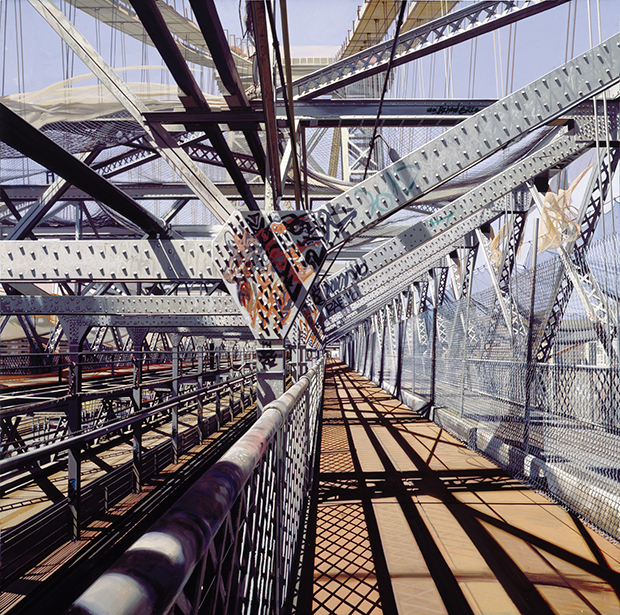
Five Richard Estes paintings you should know about
How to understand one of the pre-eminent photorealist artists of his generation - painting by painting
Just as the photograph has never truly replaced painting, the artists who emerged in the late 1960s and early 1970s known as Photorealists never simply copied photographs onto their canvases. Richard Estes, the group’s acknowledged leader, is a subtle artist, whose work is better understood as both a conservative continuation of painterly traditions, and a reaction to modernity.
"The apparently straightforward documentary simplicity of his depictions is deceptive,” writes author Linda Chase in our new Phaidon Focus edition dedicated to the artist. "He paints his subjects from odd and unexpected angles, employing an array of photographic techniques including wide-angle lenses, extreme and unusual cropping, and multiple images. At times he alters the photo-graphic information and deliberately flouts traditional precepts of good composition in the service of an apparent verisimilitude that confounds our expectations.” Intrigued? Then read onto find out about five key works.
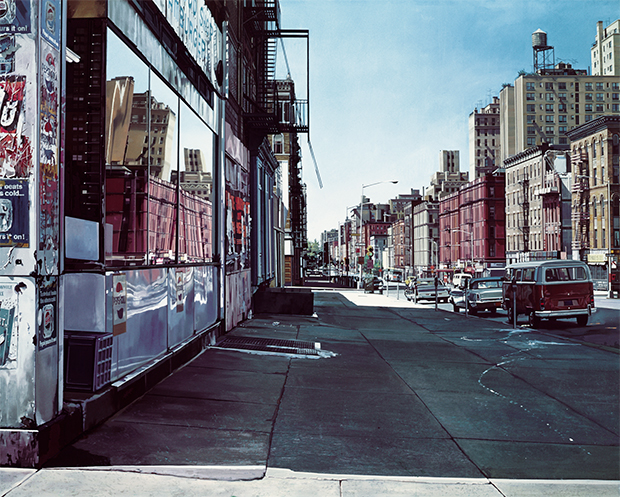
Columbus Avenue at 90th Street (1974) Most of Estes’s cityscapes fall into the four favoured perspectives that he returns to again and again – the single store, the block-front, the slant/reflection and the panorama. Symmetry, and the subtle tweaking of it, is a recurring compositional strategy. Whether ignoring and overturning the traditional tenets of good composition or confusing our eye with surprising perspectives, subverting our expectations is often Estes’s modus operandi. The counterpoint of bright sunlight and deep shadow plays an important role in many of the cityscapes and is another area in which Estes challenges our expectations. Often the foreground of a painting is in shadow while the bright sunlight areas draw the eye into the distance, enhancing the sense of depth, as in the painting above.
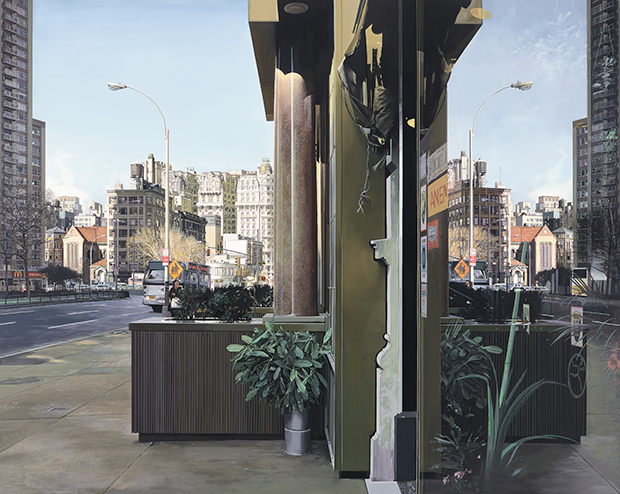
Ansonia (1977) The Ansonia is a turn-of-the-century residential hotel that Estes featured in many of his storefront reflection images. And yet this scene appears to add something to the city. The image has a remarkable static, crisp quality, quite unlike the New York seen in TV and film of that time. “A stillness pervades, at once unreal and persuasive, but it is not so much that time stands still as that it is irrelevant,” explains Chase. “Time is suspended, and what might be called the mis-en-scène, the city as both a reality and an abstraction, becomes the subject of the painting. Hyperreal in its detailed perfection, it evokes the city as an ideal.”
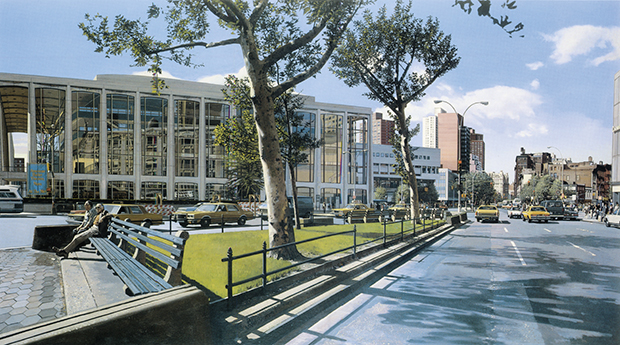
Broadway and 64th Street, Spring ‘84 (1984) Estes might have focused on the urban environment, yet he began by avoiding the inclusion of any citizens in his scenes. “The city is a construct of mankind yet humanity can seem eerily absent from Estes’s urban landscapes of the 1970s and 1980s,” writes Chase. However, by the late 1970s figures were making an appearance Yet he remained a dispassionate observer, as this angular view of a Manhattan street corner demonstrates: “All of the people in these paintings are objectively, dispassionately rendered. We are not invited to engage in their stories or to project emotions on to them, yet their presence can be seen to extend and broaden the scope of the visual dialogue vis-a`-vis the city as subject.”

Williamsburg Bridge (1995) No group of images displays Estes’s interest in the physical structure of things as clearly as the bridge paintings. One of the most powerful of these is the painting above. (sometimes titled View from Williamsburg Bridge). "At first glance the image would appear to be based on a photograph with the camera pointed down the walway on the right," writes Chase. "What Estes gives us instead is a layering of perspective achieved by combining two photographs : a straight-on, close-up view and a wide-angle, long-distance view. The central structural elements of the bridge are viewed up close and straight on with no apparent distortion. The myriad structural elements intersect with a geometry of mind–boggling complexity and stunning physicality. There is an in your face quality to all this criss-crossing metal riveted, literally, by the central shield-like iron plate – an aggressive toughness, unusual in an Estes painting that is underscored by the graffiti and rust."
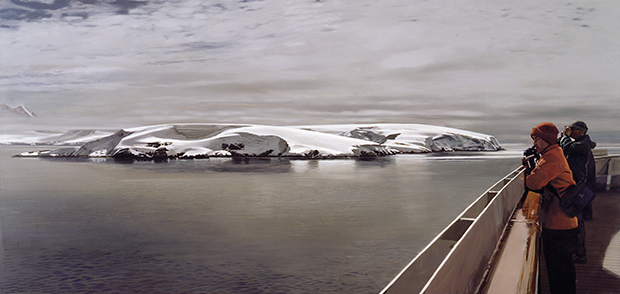
Antarctica VIII, (2007) Estes’s trip to the Antarctic in 2007 inspired a series of twelve paintings. Their outstanding evocation of the frigid waters and unsparing arctic light establishes beyond doubt the importance of these water paintings in an appreciation of Estes’s work. "In all the paintings, Estes includes a contextual reference to the vessel in which he’s travelling," writes Chase. These metal, man-made surfaces contrast both in colour and texture to the watery landscape that would seem to be the subject of the painting. The structure of the ship feels almost painfully mundane in the face of the vastness and grandure of the natural environment. All of the paintings in this series (and you can see all of them in the Phaidon Focus book) feature lowering skies, an evocation of the kind of weather the artist confronted on his trip but also one that seems to fit so well into his body of work. The ice, the clouds, the greys and blues of the rock and water partake of Estes’s signature coolness. Keen to see and read more? Then buy a copy of our new Phaidon Focus book here, and also look out for a major Estes retrospective at the Smithsonian, Washington DC, from 10 October.__
__